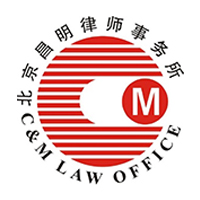How to shake off those who coattail on your good business name
TRADEMARK INFRINGEMENT
In early 2016, the authors found 31 stores infringing on the trademarks of Subway, a client of the authors’ firm since 1998. As one of the world’s leading restaurant franchise brands, Subway has the largest number of franchised stores and is still in robust growth as it reaches second and third-tier cities in China. The Chinese name of Subway, “赛百味”, a creative translation made in 1995 when Subway first came to China, is a term aligned with Chinese expression norms.
The authors reported to our client on the 31 infringing stores. The client approved our proposal that cease and desist notices should be sent to those stores. We first sent the notices by EMS, and 18 were successfully delivered – about 58%. The other 13 were rejected. Of the 18 stores that received the notices, three stores (9.67%) responded positively and agreed to change their names or signage, or delete “赛百味”, and sent us photos demonstrating the change or deletion.
For the 28 stores that did not respond positively, a second round of notices was sent by cross delivery through different courier services.
Ahead of a third round of notices, the authors instructed our agents to take photos of all 31 stores to check the results of the first two round of notices. This proved an effective move: the photos confirmed that 12 stores had closed; 14 had stopped infringing; and only five were continuing to infringe.

Senior Partner
C&M Law Office
Beijing
Tel: +86 10 6461 2505
Email: pj@cmlo.com.cn
For the five remaining infringers, the authors filed complaints with local market supervision bureaus; as a result, three of them ceased their infringement. Legal actions were filed against the final two infringing stores. During court mediation, one agreed to stop infringing; the other refused to stop its infringement even after being fined by the market supervision bureau, but finally lost in its legal struggle.
As the process shows, cease and desist notices were sufficient to end the infringement by most (83.86%) stores. Complaints with the market supervision bureaus disposed of another 9.67% of matters. A final step of legal proceedings was required to solve a mere 6.45% of the infringement cases.
The courier firm that co-operated with us was able to verify the rectification made by the infringing stores on site. This was economical and saved costs for the client.
TRADE NAME V TRADEMARK
According to Chinese trademark law and other related legal/administrative provisions – such as the Standards for Determination on Trademark Infringements issued by the China National Intellectual Property Administration, and the Supreme People’s Court Interpretations on Certain Issues on Application of Law in Hearing Trademark-related Civil Disputes – your use of a registered trademark that consists of words may be infringed by:
- Another person’s use of those words as his/her trade name; and
- Those words embraced in his/her company name, which is legally registered according to current regulations on the enterprise’s name registration.
Such use may be considered either an infringement on your trademark if the words are used prominently in the others’ trade name, or as unfair competition if they are used in the normal way of the company name but cause confusion in the marketplace.
These scenarios provide one of the most noticeable infringements against intellectual property in China so far as trademarks are concerned.
Here are some case studies that flesh out the concepts.
UNDER THE LENS

Partner
C&M Law Office
Beijing
Tel: +86 10 6461 2505
Email: baoxb@cmlo.com.cn
Case 1: Nanjing Color-shade-in-snow Co Ltd v Shanghai Color-shade-in-snow Co Ltd and its branch company registered in Nanjing. The branch company could not be registered in the same trade name in Nanjing because of the plaintiff’s existing registration. Both parties were bridal photography companies and Color-shade-in-snow was a registered trademark of the plaintiff. The plaintiff claimed that:
- Trademark infringement was occurring through the defendant’s prominent use of a trade name that was identical to the plaintiff’s trademark, under article 57 item 7 of the Trademark Law.
- Unfair competition was occurring by the defendant’s use of a registered trademark as a business name and misleading the public under article 58 of the Trademark Law and the Anti- Unfair Competition Law.
The court determined the defendant’s company name – as displayed on its signboard, order forms, receipts, promotional flyers and other material – contained the trade name “Color-shade-in-snow” in the same font, size and colour with the other words. The court held that the defendant did not use the trade name prominently and, therefore, did not infringe on the plaintiff’s trademark in that regard. However, the court held that the defendant’s use of “color-shade-in-snow” as a business name did constitute unfair competition for the same services under article 58 of the Trademark Law and the Anti-Unfair Competition Law.
POPULARITY
Case 2: In Li Huiting v Dalian Wang Jiang Co Ltd, “Wang Jiang” was a trademark registered by the plaintiff in 2003. This registration predated the incorporation of Dalian Wang Jiang Co by Japan Wang Jiang Co Ltd in 2005. The Supreme People’s Court held that the defendant did not use its full company name but prominently used its trade name “Wang Jiang” on signboards, postings and tableware; this use would likely mislead people about the source of products and services.
Dalian Wang Jiang Co was allowed keep its trade name, but use it in a proper way based on the fact that the trademark of Wang Jiang was not so popular in Dalian when the investor Japan Wang Jiang Co set up Dalian Wang Jiang as its subsidiary in China.
FAMILIARITY
Case 3: A nationwide chain store, Beijing Qingfeng Baozi Store challenged a provincial-level chain store called Shandong Qingfeng Restaurant Co. In this case, “Qingfeng” was both the registered trademark and the trade name of the plaintiff, while the defendant used “Qingfeng” as its trade name.
The Supreme People’s Court determined that, as the defendant’s website contained section headlines like “enter Qingfeng”, “Qingfeng culture”, “Qingfeng brilliance”, “Qingfeng news”, and hung banners stating “the staff of Qingfeng welcomes you” at its restaurants, people would deem the defendant’s use of “Qingfeng” as a symbol to distinguish the source of products or services (rather than just as a business name). The court held that the defendant used “Qingfeng” prominently, thus using it in the way of a trademark rather than a business name.
The reason the plaintiff sued the defendant so many years after the infringement occurred, and the defendant had already established its own chain store system in the city, was that the existing defendant’s trade name blocked the plaintiff’s plans to develop its nationwide chain stores in Shandong province’s capital city, under the same trade name. The court held that the defendant’s principal once studied catering management in Beijing, so should have known the trade name of Qingfeng in the catering industry. Therefore, the registration of that trade name was not in good faith.
SETTING THE TABLE
Case 4: In an administrative case involving “Donglaishun”, which is a restaurant brand name, the registered trademark and business name of Beijing Donglaishun Group Co, an infringing store, Chenzhou Yonggen Donglaishun Restaurant:
- Used “Donglaishun” as its trade name;
- Used “Donglaishun” in its logo and displayed the logo on the menu boards, napkin cases and WeChat account; and
- Promoted itself online in the name of “Donglaishun”.
While under investigation and with the threat of administrative punishment, the infringer agreed to change its business name. However, the local market supervision bureau still ordered the infringer to pay a fine of RMB50,000 (USD6,900) based on other aspects of trademark infringement.
LESSONS
It can be seen from the case studies that the prominent use test may be satisfied when a business uses a trade name that is identical to another’s registered trademark and:
- Uses it on a signboard for advertising;
- Uses it in different way in a font, size and colour so as the trade name is prominently shown as against the rest of the business name; and
- Uses it in other ways which a court might consider prominent use.
Additionally, a trade name used in a normal way may still constitute unfair competition if that use causes confusion about the source of products or services, even if it does not constitute an infringement on trademarks (case 1).
C&M LAW OFFICE
Room 1311, Fortune Tower B, No. 3,
North Road East-third-ring,
100027, Beijing, China
Tel: +86 10 6461 2505
Email: cmlo@cmlo.com.cn
www.cmlo.com.cn

































